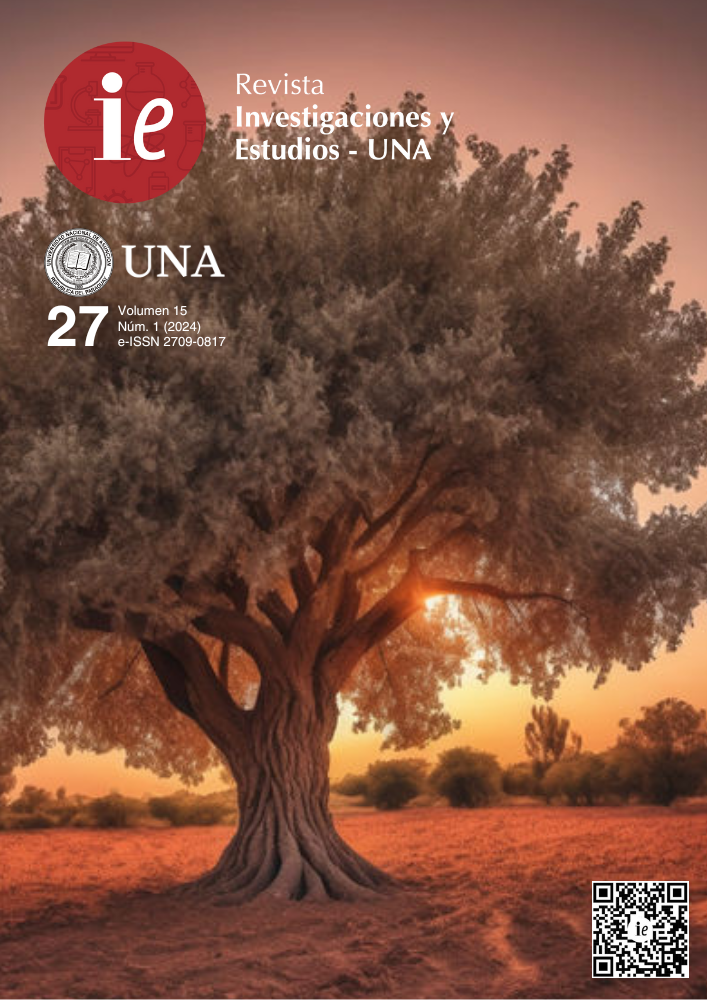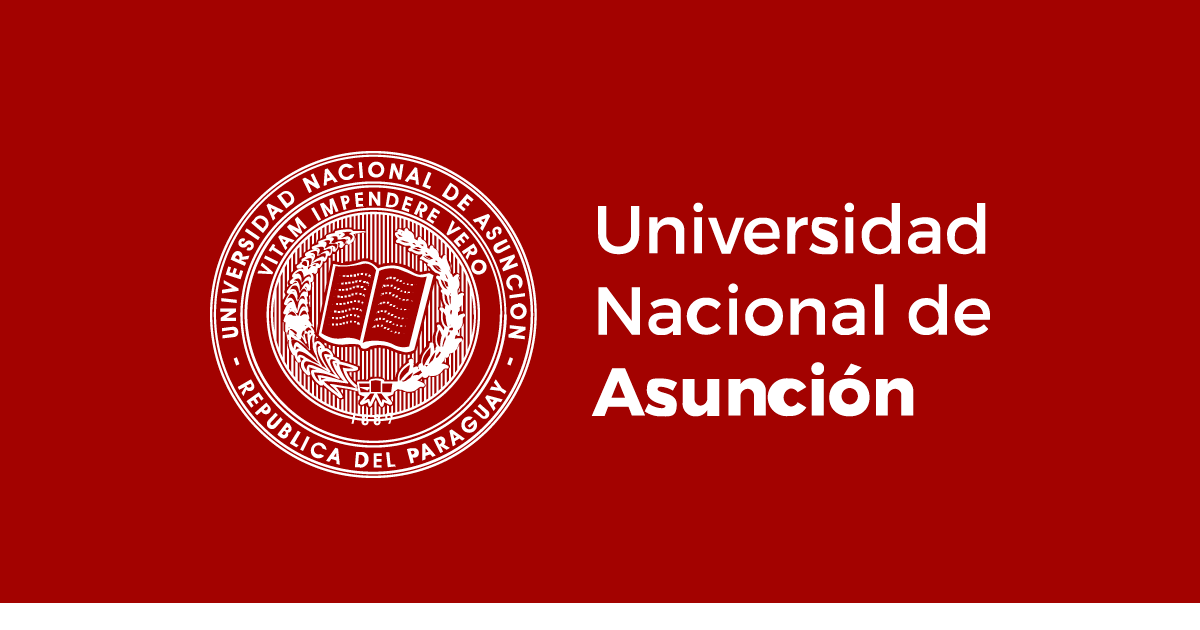Management of the regeneration of carob trees integrated into silvopastoral systems of the Paraguayan Central Chaco
DOI:
https://doi.org/10.57201/ieuna2413325Keywords:
Management, regeneration, carob trees, silvicultural treatmentsAbstract
The management of silvopastoral systems associated with carob trees (Neltuma spp.) as a tree component constitutes a forestry potential for the Chaco ecoregion, in addition to benefiting animal well-being by providing shade, an alternative source of forage, protection against wind and the effects adverse effects of temperature extremes, and mitigate the effects of climate change by storing carbon in both biomass and soil, thus constituting an integrated sustainable production system for the Paraguayan Chaco. The objective was to evaluate the management of the regeneration of carob trees integrated into silvopastoral systems of the Paraguayan Central Chaco. For this, the survival of carob trees subjected to silvicultural treatments in silvopastoral systems was determined, the increase in diameter of carob trees subjected to silvicultural treatments in silvopastoral systems was evaluated, determining the basal area, volume, biomass, accumulated carbon and carbon dioxide, equivalent carbon in the studied systems, study the phenology and health status of the inventoried tree individuals, characterize the herbaceous animal component and determine the physical and chemical properties of the soils of the paddocks under study. The results obtained refer to a high survival of carob trees in silvopastoral systems, with the averages of the dasometric variables in terms of basal area being 11.99 m2/ha, stem volume being 10.93 m3/ha and total volume being 75. 48 m3/ha. At the time of the inventory, it was recorded that 74% of the individuals were in flowering and 68% were sick. The herbaceous component was made up of Gatton panic (Panicum maximun) with an animal load of 0.8 AU and only one of the three paddocks had compacted soils. The accumulated carbon dioxide content was similar in the three pastures. It is concluded that the silvopastoral systems associated with Neltuma spp. As a tree component, they constitute a forest potential for sustainable production in the Chaco ecoregion.
Downloads
References
Alonso, J. (2011). Los sistemas silvopastoriles y su contribución al medio ambiente. Revista Cubana de Ciencia Agrícola, 45(2) 107-115.
Alvarenga, D. F., Barboza, H., Bender, A., Carlini, R., Degen, F., Fracchia, M., Geyh, R., Hoffmann, W., Kruck, A., Medina, N., F., Mereles, H., Mollsy, M., Nitsh, T., Portillo, P., L., Raidán, G., Rojas, C. y Wiens, F., (1998) Proyecto sistema ambiental del Chaco: inventario, evaluación y recomendaciones para la protección de los espacios naturales en la Región Occidental del Paraguay. San Lorenzo: MAG. Disponible en: http://www.geologiadelparaguay.com.py/PSAC-TomoI.PDF.
Arano, F. y De Egea, J (2013). Conjugando producción y conservación en el Chaco paraguayo. Asunción: WCS -AVINA, 60 p.
Brown, S. (1997). Estimating biomass and biomass change of tropical forests: a primer: FAO forestry paper – 134 . Roma. www.fao.org/docrep/W4095E/w4095e00.htmÐ_
Carranza, C. A. y Ledesma, M. (2009). Bases para el manejo de sistemas silvopastoriles. Consultado 17 set. 2022. Disponible en http://ecaths1.s3.amazonaws. com/forrajicultura/ManejoSistemasSilvopastoriles.pdf
Di Marco, E. (2013). Prosopis alba Griseb. (Algarrobo blanco) (familia Fabaceae, Mimosoideas). Producción forestal, 3(7), p. 45-46
Díaz Lezcano, M. I., Leguizamón, L., Gamarra Lezcano, C. C., Vera de Ortíz, M. y Galeano Samaniego, M. P. (2019). Estimación del contenido de carbono en sistemas silvopastoriles de Prosopis spp. en el Chaco Central paraguayo. Quebracho (Santiago del Estero), 27(1), 54
Díaz Lezcano, M. I., Gamarra Lezcano, C. C., Ruiz Diaz, S. y Vera de Ortiz, M. (2020a). Contenido de materia orgánica en suelos de sistemas silvopastoriles establecidos en el Chaco Central paraguayo. Revista de la Sociedad Científica del Paraguay, 25(2), 131-143. doi:10.32480/rscp.2020.25.2.131
Díaz Lezcano, M. I., Ríos Robles, J. R., Moreno Resquín, H. y Vera de Ortiz, M. L. (2020b). Contenido de carbono en un sistema silvopastoril del Chaco central paraguayo. Revista Cubana de Ciencias Forestales, 8(2), 344-357.
IPCC (2006). IPCC Guidelines for National Greenhouse Gas Inventories, Prepared by the National Greenhouse Gas Inventories Programme, Eggleston H.S., Buendia L., Miwa K., Ngara T., and Tanabe K. (eds). Publicado por: IGES, Japón.
Fraccia, F. (2010). Producción ganadera sustentable octubre 2010. Manual compendio de la ganadería paraguaya. ARP. p 174-181.
Fontana, M. L., Pérez, V. R. y Luna, C. V. (2018). Características evolutivas en Prosopis spp.: Citogenética, genética e hibridaciones. Rodriguésia, 69, 409-421. doi: 10.1590/2175-7860201869212
Gamarra, C., Díaz Lezcano, M. I., Vera de Ortíz, M., Galeano, M. del P. y Cabrera Cardús, A. J. N. (2018). Relación carbono-nitrógeno en suelos de sistemas silvopastoriles del Chaco paraguayo. Revista Mexicana de Ciencias Forestales, 9(46). https://doi.org/10.29298/rmcf.v9i46.134
Guyra Paraguay (2012) El Chaco seco. El último territorio natural. Asunción PY: Mundigrafic. 83 p.
IPCC (2003). Good practice guidance for land use, land-use change and forestry. Kanagawa, Japan: Institute for Global Environment Strategies.
Juarez Félix, Y. (2014). Dasometría. Apuntes de clase y guía de actividades prácticas. Cochabamba. 103p.
Kunst, C. M., Naval, R. D., Coria, R., Ledesma, P., Tomsic, A., Gonzalez, A. y Feuillade, D., (2015). Guía de prácticas recomendables para sistemas silvopastoriles. Argentina: Santiago del Estero INTA.
Lezcano, M. I. D., Lezcano, C. C. G., Díaz, S. R., Ortíz, M. V. de, Lezcano, M. I. D., Lezcano, C. C. G., Díaz, S. R. y Ortíz, M. V. de. (2020). Contenido de materia orgánica en suelos de sistemas silvopastoriles establecidos en el Chaco Central paraguayo. Revista de la Sociedad Científica del Paraguay, 25(2), 131-143. doi:10.32480/rscp.2020.25.2.131
Ibrahim, C. Villanueva, F. Casasola y J. Rojas (2006) Sistemas silvopastoriles como una herramienta para el mejoramiento de la productividad y restauración de la integridad ecológica de paisajes ganaderos. Matanzas, Cuba. Pastos y Forrajes, 29(4), 383 – 419.
Martin, G. y Agüero, S. (2009). Sistema silvopastoril: una estrategia de producción para ecosistemas del NOA. Producir XXI. Bs. As., 18(218), 28-33.
Meloni, D. A., Silva, D. M., Ledesma, R. y Bolzón, G. I. (2017). Nutrición mineral y fotosíntesis en plántulas de algarrobo blanco, Prosopis alba (Fabaceae), en estrés salino. Cuadernos de Investigación UNED, 9(2), 297-304.
Murillo Quiroz, L. S. (2021). Análisis de la regeneración natural de las especies forestales del jardín botánico de la Universidad Técnica de Manabí. Disponible en: http://repositorio.unesum.edu.ec/handle/53000/2797
Obispo, N. E., Espinoza, Y., Gil, J. L., Ovalles, F. y Rodríguez, M. F. (2008). Efecto del sombreado sobre la producción y calidad del pasto guinea (Panicum maximun) en un sistema silvopastoril. Zootecnia Tropical, 26(3), 285-288.
Ocampo, T. L. (2013). Ficha Técnica Sistemas Silvopastoriles. Secretaria de agricultura, ganadería, desarrollo rural, pesca y alimentación (SAGARPA). Subsecretaría de desarrollo rural. Dirección general de apoyos para el desarrollo rural. p. 8
Peña Bazán, N. E. (2021). Recuperación vegetativa de la especie Prosopis pallida (algarrobo) mediante la implementación de un vivero—Piura. Repositorio Institucional - UCV. https://repositorio.ucv.edu.pe/handle/20.500.12692/84377
Piñeros, R., Delgado, J. M. y Holguín, V. (2011). Respuesta del pasto Bothriochloa saccharoides a diferentes intensidades de sombra simulada en el valle cálido del Magdalena en el Tolima (Colombia). Ciencia y Tecnología Agropecuaria, 12(1), Art. 1. doi:10.21930/rcta.vol12_num1_art:214
Quinteros, M. O. (2001). Determinación de factor de forma para las principales especies forestales del Chaco. San Lorenzo. CIF/FCA/UNA.
Reyes, G., Brown, S., Chapman, J. y Lugo A. (1992). Wood densities of tropical tree species. Southern forest experimdnt station. New Orleans. United States of Department of Agriculture. Ò.
Ribaski, J., de, E. y Menezes, A. (2002). Disponibilidad y calidad del pasto buffel (Cenchrus ciliaris) en un sistema silvopastoril con algarrobo (Prosopis juliflora) en la región semi-árida Brasileña. Agroforestería en las Américas, 9 (33-34), p. 8-13.
Russo, R. O. (2015). Reflexiones sobre los sistemas silvopastoriles. Pastos y Forrajes, 38(2), 157-161.
Sato T., Saito M., Ramírez D., Molas L., Toriyama J., Monda Y., Kiyono Y., Herebia E., Dubie N., Duré Vera, E. y Ramírez Ortega, J. (2015) Development of allometric equation for tree biomass in forest ecosystem in Paraguay. San Lorenzo: FFPRI, FCA-UNA, INFONA.
Toll Vera, J. R., Martín (h), G. O., Nicosia, M. G., Fernández, M. M., Olea, L. E., González Coletti, A. y Agüero, S. N. (2016). Sobrevivencia de plantines de algarrobo blanco (Prosopis alba Griseb.) en suelos salinos y salino-sódicos del Departamento Río Hondo, Santiago del Estero, Argentina. Revista agronómica del noroeste argentino, 36(1), 57-63.
Torre, V. (2006). El algarrobo: Fragilidad. Buenos Aires, AR. Editorial Dunken. 265 p.
Uribe F., Zuluaga A. F., Valencia L., Murgueitio E., Zapata A., Solarte L., Cuartas, C. A., Naranjo, J. F., Galindo, W. F., González, J. G., Sinisterra, J. A., Gómez, J. C., Molina, C. H., Molina, E. J., Galindo, A., Galindo, V. A. y Soto, R. (2011). Establecimiento y manejo de sistemas silvopastoriles. Manual 1: Proyecto Ganadería Colombiana Sostenible. Bogotá. GEF, Banco Mundial, Fedegan, Cipav, Fondo Acción, TNC. 78 p.
Published
How to Cite
Issue
Section
License
Copyright (c) 2024 Maura Isabel Diaz Lezcano, Higinio Moreno-Resquín, Jorge Daniel Caballero-Mascheroni, Esteban Isrrael Moreira-Rivas, José Manuel Gorostiaga Ovelar

This work is licensed under a Creative Commons Attribution 4.0 International License.
















